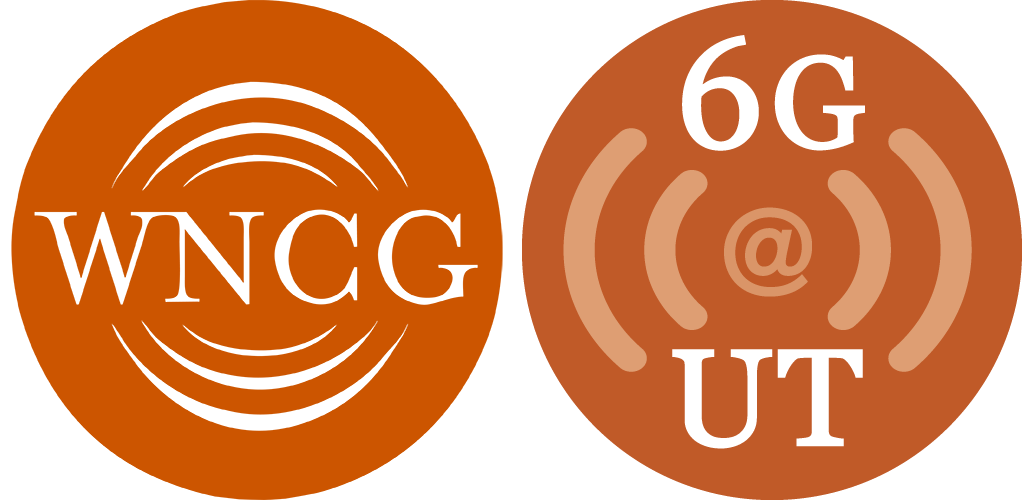We have developed non-parametric interference mitigation methods for wireless orthogonal frequency division multiplexing (OFDM) receivers. The interference mitigation methods observe interference on the unused tones, reconstruct the interference from the sparse observations, and subtract the interference from the OFDM symbol. The methods can be used in any existing OFDM receiver, and achieve 5-10 dB of SNR gain in the presence of impulsive noise. Interference is a major limiting factor for communication performance in many wireless networks, esp. cellular, Wi-Fi, and ad hoc networks. Key sources of wireless interference include other communication devices using the same or adjacent transmission band, nearby electronic devices, and switching circuitry on the computational platform itself. Interference from other sources is predominantly asynchronous to the symbol clock in the receiver. Interference has non-Gaussian statistics and causes severe degradation in communication performance of conventional receivers that are designed under an assumption of additive Gaussian thermal noise [1]. Our previous parametric approach for interference mitigation listens to the environment when the transceiver is neither transmitting nor receiving, builds a statistical model of the interference, and uses the estimated parameters in the interference mitigation method for future received data. We have shown that the appropriate statistical model is Gaussian mixture (which includes Middleton Class A as a special case) for centralized networks such as cellular, Wi-Fi and Wimax systems, and Symmetric Alpha Stable for decentralized networks such as femtocells and ad hoc networks [2]. The aggregate effect of asynchronous interference in the environment can be captured in a few parameters. This relieves the designer from requiring prior knowledge of, or having to estimate, the number, types, and locations of the interfering sources. Our parametric methods have shown 10-20 dB of SNR gain in the presence of impulsive noise over conventional receivers, which can translate into a reduction of 10-100x in bit error rate or an increase of 1-6 bits/s/Hz in spectral efficiency. However, listening to the environment and building the model requires additional overhead. The approach is also subject to mismatch in the estimated vs. actual model parameters due to training and drift. Recently, we developed two non-parametric methods to estimate and mitigate impulsive noise in OFDM systems [3]. Because the methods do not require prior knowledge of the impulsive noise model or model parameters, they do not need training and should be more robust in various noise environments. Our first algorithm estimates the impulsive noise observed in the null tones of the received signal. Our second algorithm performs joint message data and impulsive noise estimation by utilizing information on all tones. As shown in Fig. 1, the methods achieve 5 dB and 10 dB SNR gain in communication performance, respectively, as compared to conventional OFDM receivers. Computational complexity is andper iteration, respectively, whereNis the total number of subchannels andMis the number of null subchannels.(a) Gaussian mixture noise(b) Middleton Class A noise(c) Symmetric alpha stable noiseFig. 1: Symbol error rate (SER) vs. signal-to-noise ratio (SNR) for the conventional OFDM receiver (no cancellation), our proposed non-parametric sparse Bayesian learning (SBL) methods, and combined compressive sensing and least squares estimation (CS+LS) [4].We are in the process of prototyping a wireless OFDM receiver with the non-parametric interference mitigation algorithms [3] integrated into it. We will redesign the algorithms for fixed-point arithmetic, target an FPGA platform, and quantify tradeoffs in communication performance (bit error rate and bit rate) vs. implementation complexity (area, throughput and power). This study will be a proof-of-concept for real-time implementation of such algorithms. References M. Nassar, K. Gulati, M. R. DeYoung, B. L. Evans and K. R. Tinsley, 'Mitigating Near-Field Interference in Laptop Embedded Wireless Transceivers', Journal of Signal Processing Systems, Mar. 2009, invited paper. K. Gulati, B. L. Evans, J. G. Andrews and K. R. Tinsley, Statistics of Co-Channel Interference in a Field of Poisson and Poisson-Poisson Clustered Interferers IEEE Trans. on Signal Processing, vol. 58, no. 12, Dec. 2010. J. Lin, M. Nassar, B. L. Evans, Non-parametric Impulsive Noise Mitigation in OFDM Systems Using Sparse Bayesian Learning IEEE Int. Global Comm. Conf., Dec. 2011, Houston, TX USA, submitted. Online G. Caire, T. Al-Naffouri and A. Narayanan, Impulse Noise Cancellation in OFDM: an Application of Compressed Sensing & IEEE Int. Sym. on Information. Theory, 2008, pp. 1293-1297. K. Gulati, M. Nassar, A. Chopra, N. B. Okafor, M. DeYoung, N. Aghasadeghi, A. Sujeeth and B. L. Evans, 'Radio Frequency Interference Modeling and Mitigation Toolbox', Version 1.6, Apr. 1, 2011.

